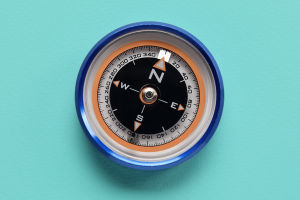Hey, Lykkers, biking is a fantastic way to stay fit, reduce your carbon footprint, and save money on transportation.
Whether you're looking to enjoy a leisurely ride, commute to work, or keep healthy, getting started with biking can be both exciting and a bit daunting.
Here are some practical tips to help beginners kick off their biking journey with confidence.
The Rise of Biking
Biking has become increasingly popular worldwide. It's not just a mode of transport but a hobby, sport, and a great way to explore the outdoors. Cities are becoming more bike-friendly, with dedicated lanes and bike-sharing programs popping up everywhere. But why is biking so great?
Benefits of Biking
Health Benefits: Biking is a low-impact exercise that boosts cardiovascular health, strengthens muscles, and improves joint mobility. It's also great for mental health, reducing stress and anxiety.
Environmental Benefits: Riding a bike is an eco-friendly alternative to driving. It reduces carbon emissions, helping combat climate change and improve air quality.
Economic Benefits: Biking is cost-effective. It saves you money on fuel, parking, and public transportation. Plus, the maintenance cost of a bike is much lower than that of a car.
Choosing the Right Bike
The first step is selecting a bike that suits your needs. Here are the main types:
1. Road Bikes: Best for smooth pavements and long-distance rides.
2. Mountain Bikes: Ideal for off-road trails and rugged terrain.
3. Hybrid Bikes: A mix of road and mountain bikes, perfect for commuting and casual rides.
Visit a local bike shop to get a proper fitting and advice on which bike matches your goals.
Helmet Safety
Wearing a helmet is crucial for safety. A helmet guards your head in case of falls or accidents. Ensure your helmet fits well and sits level on your head, with the straps securely fastened under your chin.
Basic Riding Skills
Start with mastering the basics:
1. Balancing: Practice balancing on your bike by coasting on a gentle slope.
2. Pedaling: Learn to pedal smoothly and consistently.
3. Braking: Get comfortable using both brakes. The front brake provides more stopping power but use it gently to avoid flipping over.
4. Shifting Gears: Understand how to shift gears to make pedaling easier on different terrains.
Safe Turning and Changing Directions
Safety in turning and changing directions is vital. Follow these steps:
1. Signal: Use hand signals to indicate your intentions to other road users.
2. Check: Always glance behind you before turning or changing lanes.
3. Speed: Slow down before making a turn, especially on unfamiliar paths.
4. Path: Choose a clear and safe path to turn.
Rules and Safety
Adhering to rules and prioritizing safety ensures a smooth biking experience:
1. Observe Traffic Laws: Follow all traffic signals and signs.
2. Ride Predictably: Stay in bike lanes where available and avoid sudden movements.
3. Visibility: Wear bright clothing and use lights or reflectors, especially when riding at dawn, dusk, or night.
4. Stay Alert: Watch out for cars, pedestrians, and obstacles on the road.
Starting to ride a bike can open up a world of opportunities for fitness, fun, and eco-friendly commuting. By choosing the right bike, prioritizing safety, and practicing essential skills, you can enjoy all the benefits biking has to offer. So, gear up, stay safe, and happy riding, Lykkers!


